#Olivera Lazarevic
Text
LAZAREVIC SISTERS V
Olivera Lazarevic
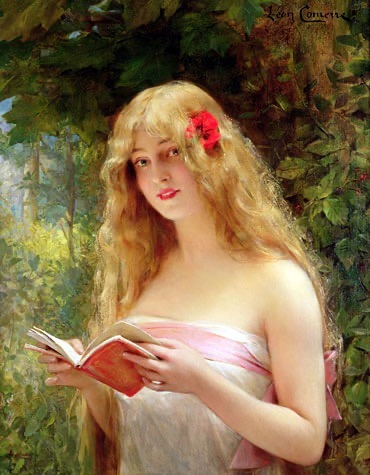
Early Life
Olivera Lazarević, also often referred to in Byzantine and Greek sources as Maria, was the fifth child and youngest daughter of Knez Lazar and his wife Milica.
She was likely born around 1372/1373 and raised in her father’s capital, Kruševac, receiving the same education as her elder sisters, under the guidance of their mother and maternal aunt, Nun Jefimija.
Like most in her family, she was a fanatic of the arts and literature. Though she was never an artist in her own right, she acted as a patron of it.
There is a folk legend that in her youth, Olivera caught the attention of the Serbian knight, Miloš Obilić, who happened to be a frequent visitor at her father’s court and was considered one of the family.
This attraction led to a marriage proposal by Obilić, yet he was refused by her father, using her young age as an excuse.
Marriage to Sultan Bayezid I
Following the Battle of Kosovo in the summer of 1389, and the death of Sultan Murad I and execution of Knez Lazar, the Serbs abided themselves in a vassalage to the Ottomans due to the Hungarian attacks, who wanted to take charge of Serbia and the advancement of the Ottomans.
To officialize this "ending" vendetta, a proposal was made to the then regent, Milica, of a union of peace with the newly crowned Sultan Bayezid, son of Sultan Murad. Although the mother tried to fight and prolong her final decision, by the end of that same year, her youngest daughter was betrothed to the new Sultan.
The Serbian lords, who were quite unhappy about this betrothal, involved themselves in some sort of intrigues to make Bayezid suspicious in order to prevent this union. However, it obviously did not prevail.
It is unclear if the wedding reception took place in late 1389 or in the spring of 1390. As stated by Konstantin Kostenecki in his biography of Stefan Lazarević written in 1431, he reports that after the Ottoman ambassadors and Milica agreed on the marriage, Stefan appeared before Bayezid with his sister Olivera and the marriage took place. As far as we know, the proposal was accepted in late 1389.
Nonetheless, one thing is for sure, and that is the fact that the reception took place no later than the spring of 1390. This is because the joint action of the Serbs and Turks against the Hungarians in northern Serbia, southern Hungary, and eastern Bosnia took place already in the spring or at the latest in the summer of that year, meaning by the spring of 1390, Olivera was married to the same man who gave orders for her father’s execution.
The wedding seems to have been kept quiet as it appears to have taken place in a mosque, following a Muslim ceremony. Many Serbian lords and people were unhappy about their Orthodox Christian Princess marrying a Muslim, even if it brought some temporary peace to Serbia.
According to Ducas, a 15th-century historian, on top of many talents of silver from Serbia's mines, Bayezid received "a tender virgin."
With this marriage came a new title and epithet. Ottomans referred to her as "Devlet Hatun," meaning "State Woman" or "Queen," while she also earned a Greek nickname/epithet, "Despina," meaning female despot, queen, or mistress.
It appears that for the rest of her life, she was referred to by this epithet instead of her actual name.
A Woman of Great Influence
Despite the unfavorable circumstances in which this political marriage began, it is noted by historical and contemporary historians that Bayezid loved and valued the counsel of his wife, Despina. It is accepted that the couple welcomed three daughters together; the eldest bears an unknown name, the second in line is Pasa Melek, and the youngest is Oruz.
Her legendary beauty, noble background, and education played a key role in Bayezid’s favoritism of her over all his other consorts and in his trust in her counsel.
From the moment she arrived until his last breath, she remained his main and favorite wife, and had influence on her husband's politics, which played in favor of her people.
Despina was, of course, blamed for having introduced European customs, wine, and mass partying into the once "pious" Ottoman court, and for "whispering in her brother’s favor." However, these criticisms were mostly due to the fact that she was a Christian wife and remained one even though she had influence over her husband. This of course, played a role in the Muslim Ottomans distain of her.
Though it is unknown if Despina reciprocated the same sentiment towards her husband, it is noted that wherever Bayezid went, he could not sperate from the Serbian Princess, and thus he took her everywhere with him, suggesting that throughout their marriage she remained a loyal companion.
Throughout his reign, and despite coming and going concubines, Bayezid remained devoted to one woman: Despina.
According to Serbian sources, her biggest accomplishments were to partake in Bayezid’s decision to transfer a vast portion of Vuk Branković’s lands (her brother-in-law through Mara) in 1397, following the man’s death and place them under the governance of her younger brother, Stefan.
The other was to save her brother from Bayezid’s wrath in 1398 when he was accused of conspiring with the King of Hungary. Stefan came to the Sultan after the failed attempt of his mother to defend him. It is believed that Olivera was the one who stepped up, and her brother was forgiven upon admitting his fault.
Captivity
Following the aftermath of the Battle of Ankara in 1402, a battle which Bayezid and his sons, Mustafa and Musa, lost and were taken as captives, Timur sent his generals to plunder Bursa, taking many treasures from the palace with them, including Bayezid's concubines. Eventually, they made their way to Yenisehir, where Despina was hiding with two of her daughters.
Despina and her household were brought to Timur and later to Bayezid, who was being kept captive in a tent. Although they were treated with respect at first, events occurred that led to Bayezid being humiliated and kept in an iron cage, while his wife was forced to perform menial tasks at festivities.
Unable to bear the insult made towards his wife, Bayezid committed suicide in his iron cage and was temporarily buried in Akşehir, where he had passed.
Timur is believed to have felt great guilt because of this and released Bayezid’s entourage. He married Despina’s daughters to the son of one of his generals and the other to his grandson, Ebu Bakr Mirza. Both daughters moved to Samarkand where they lived with their families.
In 1404, Despina was released along with her step-son, Musa, during the transfer of Bayezid’s body to his personal mosque in Bursa. It is assumed she attended his second funeral.
As the Advisor of the Despots
Following her release, nothing is known or recorded about Despina's whereabouts until the 1420s. It is believed by some that she might have stayed in Bursa or somewhere nearby with her youngest daughter until she grew tired of the battle for the throne going on between Bayezid’s sons and later moved to Serbia.
Or, she might have stayed until the time her youngest daughter was married off.
After her return to Serbia, she took her place at her already widowed brother's side as his comforter and trusted advisor. However, she never lived at court but instead had her own residence in the courtyard of Belgrade.
She was extremely popular, respected, and valued in her homeland. Even during her lifetime, the Serbs referred to her as “Esther” due to her sacrificial marriage to a persecutor of the Christians.
During her stay in Dubrovnik, it is plausible she met with her sister and brother-in-law, Sandalj Hranic, though some historians believe she was there for diplomatic reasons, possibly to acquire information on her brother-in-law to inform her younger brother; the now Despot Stefan Lazarevic.
In 1427, her younger brother passed away, but this did not end her influence. Soon after, she acted as an advisor to her nephew, Durad Brankovic, and from 1430 onwards, moved with his family to Smederevo, the new capital.
Murad II, the Ottoman Sultan at the time, must have believed that since Stefan Lazarevic had died without any children to proclaim as heir, then the state should pass from Stefan to his step-grandmother, Olivera, and thus to himself.
As a result of this situation and threat to their state, historians believe it was Despina who planned Mara Brankovic's marriage to Murad in order to prevent the Ottomans from advancing. And thus, the marriage was concluded in 1435 in the Ottoman capital.
Though this marriage, unlike Olivera's own marriage, did not prevent Ottoman expansion in Serbia.
In 1441, while her nephew Durad was in exile, she traveled from Dubrovnik to Bar, where it is believed she was able to convey secret diplomatic letters to her nephew.
Later Life
Nothing is known about the later life of Despina from 1443 onwards; they lost track of her.
The last time she is mentioned alive is in a 1443 document, in which her sister, Jelena, names her as her executor in her will. She left money to Despina in order to build a burial place for her and to distribute some of the money to the poor.
After this, nothing more is recorded; it is unknown when, where, and how she died.
Issue
Unkown Hatun
Pasa Melek Hatun
Oruz/Uruz Hatun
( Sources: Osmanlı Sarayı’nda Bir Sırp Prenses/ Mileva Olivera Lazarevic by Mustafa Çağhan Keskin, КЋЕРИ КНЕЗА ЛАЗАРА ИСТОРИЈСКА СТУДИЈА ПОГОВОР by Jelka Redep, Dve srpske sultanije : Olivera Lazarevic (1373-1444) : Mara Brankovic (1418-1487) by Nikola Giljen, “КЋЕРИ КНЕЗА ЛАЗАРА ИСТОРИЈСКА СТУДИЈА ПОГОВОР” by Jelka Redep, Dve srpske sultanije : Olivera Lazarevic (1373-1444) : Mara Brankovic (1418-1487) by Nikola Giljen, The European Sultanas of the Ottoman Empire by Anna Ivanova Buxton )
#Olivera Lazarevic#olivera despina#despinahatun#lazarevicdynasty#history#art#illustration#lazarevicsisters#ottoman empire#middle ages#hatun#despina hatun#geology#biography
47 notes
·
View notes
Text
Ayşe was born around 1613, she was greek. With permission of Kösem Sultan, Murad IV rewarded her with Haseki Sultan title. In 1633, Murad raises her salary to 2000 aspers a day. The number and identity of her childern has not been confirmed. Angelo Alessandri, a secretary of venetian ambassador wrote about her that she was of Greek origin. According to him, although she was beautiful, she was not as beautiful in spirit as her mother- in law Kösem. Apparently, Ayse was a woman who wasted her money more for greed then generosity. Murad was known for loving Ayşe. He treated her like a queen and she behaved like a queen.Ayşe accompanied Murad IV to Baghdad Campaign. Which was unusal since the incident with Bayezid I amd Olivera Lazarevic when they were captured by Timur. According to austrian historian Joseph von Hammer- Purgstall, Ayşe witnessed the entire campaign.Murad IV passed away in February 1640. We know that Kaya Esmehan's mother came into conflict with Kösem Sultan because Kösem wanted to marry the little girl Kaya to Melek Ahmed Pasha, who was about the same age as Kösem, and she succeeded in doing so. Ayse's salary was cut to just 100 aspers per day. This could just be a coincidence or a hint that Ayse was Kaya's mother. Ayşe passed away in 1679/1680.

youtube

#valide sultan#youtube#ayşesultan#hasekiayşesultan#ottoman history#histoire#history#hasekisultan#sultanmurad#kösemsultan
7 notes
·
View notes
Note
Hey! I'm wondering. Is Olivera Lazarevic or anyone from her family a saint in Serbia?
I’m actually not sure about Princess Olivera, but I think she is portrayed in the Cathedral Church of St. Michael the Archangel in Belgrade with a halo. Her parents, Prince Lazar Hrebeljanovic and Princess Milica Hrebeljanovic, as well as her brother Despot Stefan Lazarevic, have been venerated in the Orthodox Christian Church as saints. Her sister, Princess Jelena Lazarevic, was given the title “Right-Believing”.
5 notes
·
View notes
Photo

Ini Daftar Transfer Resmi Liga Italia Serie A per Klub Up Date hari ini 15 Juli 2017
KABAR BOLA – Ini Daftar Transfer Resmi Liga Italia Serie A per Klub Up Date hari ini 15 Juli 2017 – Jendela transfer musim panas 2017 sudah resmi dibuka pada Sabtu 1 Juli lalu dimana hamipr semua klub serie A sudah mulai menghabiskan uang. Berikut daftar pemain yang masuk dan keluar setiap Klub sampai hari ini .
Transfer lengkap sumber sportskeeda
ATLANTA BC
INS: Timothy Castagne (£5.10m, KRC Genk), Josip Llicic (£4.68m, Fiorentina), Etrit Berisha (£4.25m, Lazio), Jose Luis Palomino (£3.40m, Ludogorets), Andreas Cornelius (£2.98m, FC Copenhagen), Fabio Eguelfi (£1.28m, Inter), Luca Vido (£850k, AC Milan), Matteo Pessina (£850k, AC Milan), Robin Gosens (£765k, Heracles Almelo), Joao Schmidt (Free. Sao Paulo), Nicolas Haas (Free, FC Luzern).
OUTS: Andrea Conti (£21.25m, AC Milan), Franck Kessie (Loan, AC Milan), Alberto Paloschi (Loan, SPAL), Prince Gouano (Free, SC Amiens), Giuseepe Ungaro (Undisclosed, Renate), Mauricio Pinilla (Undisclosed, Genoa), Mario Pugliese (Loan, Pro Vercelli), Roberto Ranieri (Loan, Alessandria), Mattero Contini (Free Agent), Cristian Raimondi (Retired), Marcos De Paula (Free Agent), Giulio Migliaccio (Retired), Abdoulav Konko (Free Agent).
BENEVENTO CALCIO
INS: Gaetano Letiziav (1.49m, Carpi), Vid Belec (£1.49m, Capri), Massimo Coda (£1.45m, Salernitana), Andrew Gravillon (£1.28m, Inter U19), Raman Chibsah (£723k, Sassuolo), Bright Gyamfi (£238k, Inter).
OUTS: Enrico Pezzi (Free, Cittadella), Pier Graziano Gori (Free Agent), Omar Joof (Free Agent).
BOLOGNA FC 1909
INS: Saphir Taider (£3.40m, Inter), Sebastien De Maio (£1.70m, RSC Anderlecht), Filip Helander (£1.70m, Hellas Verona), Giancarlo Gonzalez ( £1.70m, US Palermo), Andrea Poli (Free, AC Milan), Fabrizio Brignani (Undisclosed, Cremonese U19).
OUTS: Uros Radakovic (Free, Sigma Olomouc), Mouhamadou Sarr (Loan, Prato), Simone Rossetti (Undisclosed, V.Francavilla), Nicolo Cherubin (Undisclosed, Hellas Verona), Marios Oikonomou (Loan, SPAL), Luca Rizzo (Loan, SPAL).
CAGLIARI CALCIO
INS: Senna Miangue (£2.98m, Inter), Paolo Farago (£1.96m, Novara), Marco Andreolli (Free, Inter), Luca Cigarini (Free, Sampdoria).
OUTS: Nicola Murru (£5.95m, Sampdoria), Marco Fossati (£255k, Hellas Verona), Simone Colombi (£234k, Carpi), Bruno Alves (Free, Rangers), Caio, Rangel (Undisclosed, Estoril), Fabio Puledda (Undisclosed, Atletico Uri), Suraji Adam Rahuf (Free Agent), Roberto Colombo (Retired), Davide Di Gennaro (Free Agent), Werther Carboni (Free Agent).
CHIEVO VERONA
INS: Luca Garritano (£850k, AC Cesena), Alejandro Rodriguez (£425k, AC Cesena), Michele Rigione (£170k, AC Cesena), Gianluca Gaudino (£43k, Bayern Munich).
OUTS: Paul-Jose Mpoku (£1.53m, Standard Liege), Tomasz Kupisz (£595k, AC Cesena), Nicolas Spolli (Free, Genoa), Amedeo Benedetti (Undisclosed, Cittadella), Lamin Jallow (Loan, AC Cesena), Filippo Costa (Undisclosed, SPAL), Luca Di Minico (Loan, Trastevere), Marco Calderoni (Undisclosed, Novara), Gennaro Sardo (Retired), Mariano (Izco (Free Agent) Dejon Lazarevic (Free Agent), Nicolas Frey (Free Agent), Nicola Bellomo (Free Agent), Walter Bressan (Free Agent).
FC CROTONE
INS: Oliver Kragl (£340k, Frosinone), Davide Faraoni (Free, Udinese Calcio), Ante Budimir (Loan, Sampdoria).
OUTS: Marco Firenze (Loan, Pro Vercelli), Nunzio Di Roberto (Free Agent), Pietro De Giorgio (Free Agent), Claiton (Free Agent), Diamel Mesbah (Free Agent).
ACF FIORENTINA
INS: Vitor Hugo (£6.80m, Palmeiras), Nikola Milenkovic (£4.34m, Partizan), Bruno Gaspar (£3.40m, Vit Guimaraes), Sebastian Cristoforo (£2.98m, Sevilla FC), Carlos Sanchez (£2.55m, Aston Villa), Maximiliano Olivera (£2.13m, Penarol), Gaetario Castrovilli (£1.19m, Bari).
OUTS: Josip LLicic (£4.68m, Atalanta), Gonzalo Rodriguez (Free, San Lorenzo), Giuseppe Pandolfi (Undisclosed, Pontedera), Luca Zanon (Loan, Ternana), Kevin Diks (Loan, Feyenoord), Giusepe Rossi (Free Agent), Saverio Madrigali (Free Agent).
GENOA CFC
INS: Oscar Hiliemark (£2.13m, US Palermo), Nicolas Spolli (Free, Chievo Verona), Andrei Galabinov (Free, Novara), Mauricio Pinilla (Undisclosed, Atlanta).
OUTS: Lucas Orban (Free, Racing Club), Manuel Milinkovic (Loan, Foggia), Andrea Beghetto (Loan, Frosinone), Rubinho (Free Agent), Goran Pandey (Free Agent), Nicolas Burdisso (Free Agent).
HELLAS VERONA
INS: Marco Fossati (£255k, Cagliari Calcio), Alessio Cerci (Free Atletico Madrid), Nicolo Cherubin (Undisclosed, Bologna), Daniele Vergle (Loan, AS Roma).
OUTS: Filip Helander (£1.70m, Bologna), Eros Pisano (Free, Bristol), Luca Checchin (Loan, Brescia), Federico Viviani (Loan, SPAL), Pierluigi Cappelluzzo (Loan, Pescara), Alejandro Gonzalez (Free Agent).
INTER MILAN
INS: Milan Skriniar (£19.55m, Sampdoria), Nicolo Zaniolo (£1.53m, Entella U19), Jens Odgaard (£1.28m, Lyngby BK).
OUTS: Gianluca Caprari (£10.20m, Sampdoria), Ever Banega (£7.65m, Sevilla FC), Juan Jesus (£6.80m, AS Roma), Federico Dimarco (£3.40m, FC Sion), Saphir Taider (£3.40m, Bologna), Senna Miangue (£2.98m, Cagliari Calcio), Fabio Eguelfi (£1.28m, Atlanta), Caner Erkin (£638k, Besiktas), Bright Gyamfi (£238k, Benevento), Marco Andreolli (Free, Cagliari Calcio), Felipe Melo (Free, Palmeiras), Juan Pablo Carrizo (Free, Monterrev), Andrea Palazzi (Loan, Pescara), Roberto Ogunseve (Undisclosed, Olbia), Andrea Pinton (Free Agent), Rodrigo Palacio (Free Agent), Edmund Hottor (Free Agent).
JUVENTUS FC
INS: Juan Cuadrado (£17.00m, Chelsea), Medhi Benatia (£14.45m, Bayern Munich), Rodrigo Bentancur (£8.93m, Boca Juniors).
OUTS: Kingsley Coman (£17.85m, Bayern Munich), Simone Zaza (£13.20m, Valencia), Neto (£5.95m, Valencia), Anastasios Donis (£2.55m, VfB Stuttgart), Younes Bnou Marzouk (£340k, FC Lugano), Michele Cavion (Free, Cremonese), Marcelo Dialo (Free, CD Lugo), Nico Hidalgo (Free, Cadiz CF), Alhassane Soumah (Loan, FC Chiasso), Stefano Beltrame (Loan, Go Ahead Eagles), Federico Mattiello (Loan, SPAL), Emil Audero (Loan, Venezia), King Udoh (Loan, FC Chiasso), Stefano Pelizzari (Loan, Wattens), Stefano Pelini (Free Agent), Giorgio Siani (Free Agent), Paolo De Ceglie (Free Agent), Francesco Anacoura (Free Agent), Dani Alves (Free Agent), Elvis Kabashi (Free Agent), Ouasim Bouv (Free Agent), Leonardo Bonucci (£35m, AC Milan)
SS LAZIO
INS: Adam Marisic (£5.53m, KV Oostende), Simone Palombi (£255k, Ternana).
OUTS: Etrit Berisha (£4.25m, Atalanta), Josip Elez (£425k, HNK Rijeka), Simone Palombi (£128k Ternana).
AC MILAN
INS: Andre Silva (£32.30m, FC Porto), Andrea Conti (£21.25m, Atlanta), Hakan Calhanoglu (£18.70m, Bayer Leverkusen), Mateo Musacchio (£15.30m, Villarreal), Ricardo Rodriguez (£15.30m, Vfl Wolfsburg), Franck Kessie (Loan, Atlanta), Fabio Borini (Loan, Sunderland), Leonardo Bonucci (£ 35m, Juventus)
OUTS: Juraj Kucka (£4.25m, Trabzonspor), Diego Lopez (850k, Espanyol), Matteo Pessina (£850k, Atalanta), Luca Vido (850k, Atalanta), Andrea Bianchimano (Free, Reggina), Andrea Poli (Free, Bologna), Alessandro Plizzari (Loan, Ternana), Hachim Mastour (Free Agent), Keisuke Honda (Free Agent), Nnamdi Oduamadi (Free Agent).
SSC NAPOLI
INS: Nikola Maksimovic (£17.00m, Torino), Marko Rog (£11.05m, Dinamo Zagreb), Adam Ounas (£8.50m, G.Bordeaux).
OUTS: Jonathan de Guzman (Free, E.Frankfurt), Igor Lasicki (Loan, Wisla Plock), Daniele Celiento (Undisclosed, Viterbese), Luca Palmiero (Free Agent), Giuseppe Nicolao (Free Agent), Felice Gaetano (Free Agent).
AS ROMA
INS: Rick Karsdorp (£11.90m, Feyenoord), Bruno Peres (£10.63m, Torino), Lorenzo Pellegrini (£8.50m, Sassuolo), Juan Jesus (£6.80m, Inter), Mario Rui (£5.10m, FC Empoli), Hector Moreno (£4.85m, PSV Eindhoven), Maxime Gonalons (£4.25m, Olympique Lyon), Federico Fazio (£2.72m, Spurs).
OUTS: Mohamed Salah (£35.70m, Liverpool), Antonio Rudiger (£29.75m, Chelsea), Leandro Paredes (£19.55m, Zenit S-Pb), Federico Ricci (£3.83m, Sassuolo), Marco Frediani (Free, Parma), Arturo Calabresi (Loam, Spezia Calcio), Daniele Verde (Loan, Hellas Verona), Sevdou Doumbia (Loan, Sporting CP), Christian D’Urso (Loan, Ascoli), Ismail H’Maidat (Loan, KVC Westerlo), Pepin (Loan, Brescia), Nicola Falasco (Loan, Avellino), Ionut Pop (Undisclosed, Alessandria), Franck Cedric (Free Agent), Tomas Svedkauskas (Free Agent), Francesco Totti (Retired).
UC SAMPDORIA
INS: Gianluca Caprari (£10.20m, Inter), Nicola Murru (£5.95m, Cagliari Calcio), Bruno Fernandes (£5.10m, Udinese Calcio).
OUTS: Milan Skriniar (£19.55m, Inter), Luis Muriel (£17.00m, Sevilla), Bruno Fernandes (£7.23m, Sporting CP), Luca Cigarini (Free, Cagliari Calcio), Jakub Hromada (Undisclosed, Slavia Prag), Ante Budimir (Loan, Crotone), Wladimiro Falcone (Loan, Bassano), Bambo Diaby (Free Agent), Angelo Palpmbo (Retired).
US SASSUOLO
INS: Federico Ricci (£3.83m, AS Roma), Filippo Bandinelli (Free, Latina Calcio).
OUTS: Lorenzo Pellegrini (£8.50m, AS Roma), Raman Chibsah (£723k, Benevento), Simone Franchini (Loan, Ternana), Alessio Vita (Undisclosed, AC Cesena), Karim Laribi (Free Agent).
SPAL 2013
INS: Felipe (£850k, Udinese Calcio), Alberto Paloschi (Loan, Atlanta), Jacopo Murano (Free, Savona).
OUTS: Tommaso Costantini (Undisclosed, Juve Stabia), Lorenzo Capezzani (Free Agent), Tommaso, Silvestri (Free Agent), Nicolas Giani (Free Agent).
TORINO FC
INS: Lyanco (£5.02m, Sao Paulo), Vania Milinkovic-Savic(£3.57m, Lechia Gdansk), Salvatore Sirigu (Free, Paris SG).
OUTS: Nikola Maksimovic (£17.00m, SSC Napoli), Bruni Peres (£10.63m, AS Roma), Pontus Jansson (£3.49m, Leeds), Panagiottis (£595k, Olympiacos), Marco Chiosa (£425k, Novara), Daniele Padelli (Free, Inter), Carlao (Loan, APOEL Nicosia), Alfred Gomis (Loan, SPAL).
UDINESE CALCIO
INS: Giuseppe Pezzella (£3.83m, US Palermo, Antonin Barak (£2.55m, Salvia Prag), Mamadou Couliabaly (£1.70m, Pescara), Svante Ingellson (£638k, Kalmar FF), Jorge Segura (Free, Envigado), Albano Bizzarri (Free, Pescara), Alv Malle (Undisclosed Watford U23).
OUTS: Bruno Fernandes (£5.10m, Sampdoria), Guilherme (£3.83m, Dep. La Coruna), Felipe (£850k, SPAL), Jorge Segura (Loan, Watford), Luca Magnino (Free, Feralpisalo), Davide Faraoni (Free, Crotone), Emanuele Rovini (Loan, Pro Vercelli), Lucas Evangelista (Loan, Estoril), Samuele Perisan (Loan, Triestina), Mamadou Coulibaly (Loan, Pescara), Antonio Vutov (Loan, Levski Sofia), Agostino Camigliano (Undisclosed, Cittadella), Elia Francesutti (Free Agent).
0 notes
Text
THE SINS OF DESPINA HATUN
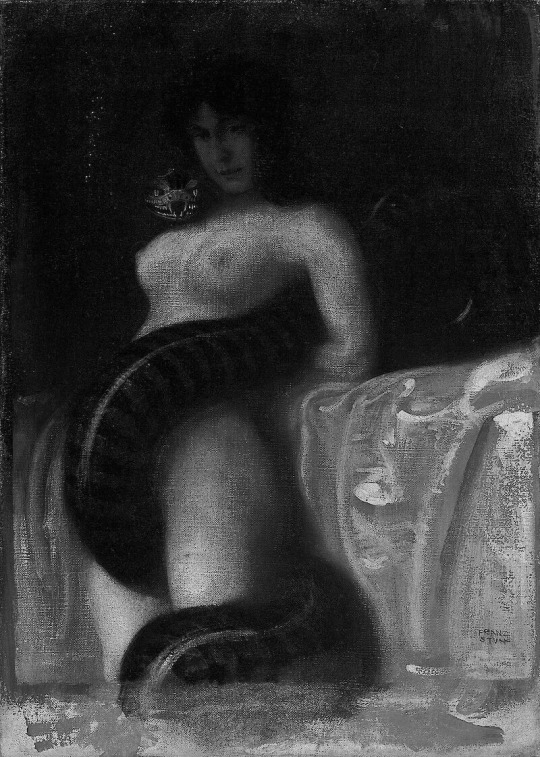
Since the 14th century, one woman has haunted the history of the Ottoman Empire and the very minds of their historians with her influence over a Sultan who suffered a hummiliating fate.
The only wife of a Sultan who has been the target of curses; Despina Hatun.
The reason for this great hatred of her has to do with the fact that she was influential and remain christian throughout her marriage. She was able to maitain the first and main place in the harem of her husband and to make him like her. A likeness that overtime grew into love and devotion.
Her wishes did not remain mere wishes, and for this reason the muslim associates of Sultan Yildirim Bayezid Han, as well as later Turksih historians resented her. Today most people remember her as “Bayezid’s great love”.
To Ottoman sources she was a fatal woman who lured their Sultan into sin. It can be concluded from that amount of hatred that she was allowed privileges and more power than was allowed for a foreign wife of a Sultan, or an imperial wife in general.
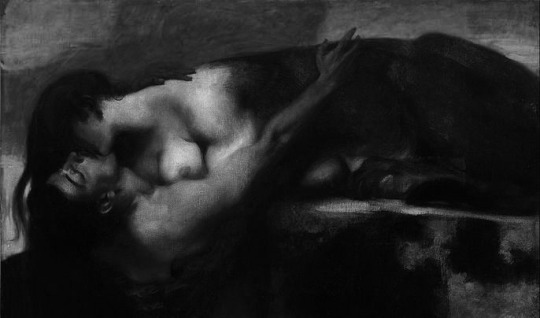
SHE MADE THE SULTAN FALL FOR HER
"As for Yıldırım, let's say that he fell in love with the princess." - Necdet Sakaoğlu. Bu Mülkün Kadın Sultanları, pg 83
"Throughout his life he was devoted to Despina, and his brother-in-law Stephen in turn was a devoted and steadfast friend." - Herbert Gibbons. The Foundation of the Ottoman Empire
According to Chalkokondyles, when Bayazit's favorite wife, Lazareva [daughter], whom he took everywhere with him into battle, was captured and handed over to Tamerlane, he ordered that wine be served to him there, in front of her husband. The enraged Bayazit told Tamerlane that what he was doing was not worthy of his father and mother. - Две српске султаније : Оливера Лазаревић (1373-1444), Мара Бранковић (1418-1487), pg 107
"When the latter's wife, the daughter of Lazar, whom he loved more than any of the others, had been taken away, and Timur was taking her around in the camp with him, he made her pour his wine in front of Bayezid, her husband." - Laonikos Chalkokondyles
"He kept her close – she accompanied him everywhere - he appeared unable to part from her. She was the one person, who influenced him most and was of course blamed by the Ottoman chroniclers for the fall of Beyazid’s empire into the hands of Timur. They considered the young sultan totally captivated by her."- Anna Buxton. The European Sultanas of the Ottoman Empire
It is widely understood that throughout their marriage Despina and Bayezid shared a devoted sentiment-perhaps more on his part-despite the circumstances that brought them together. The couple had similar interests such as politics, wine, partying, European customs, conversations and according to historians found constant erotic pleasure with each other. Though all of these cited interests might just be Ottoman historians attempts to depict this woman as deceitful.
" The sexually robust woman – she satisfies all his desires- but remains a Christian." - Richard Franz Kreutel performs a service to Ottoman polemic.
It is said that for some days, Bayezid remained in Despina's chamber and completely forgot about state affairs.
Olivera (Despina Hatun) is accused by Ottoman historians of using her charms and beauty to lure Bayezid to her. This seems highly untrue as Bayezid's harem is labeled as being filled with "forbidden beauties." He could have set his sight on another with more charm and beauty, and in fact he did, but still remained devoted to Despina.
It seems they use her beauty and political influence only as a means to label her as a Femme Fatale who is cunning, power-hungry and worst even, an infidel. Yet, when we look at foreign sources about the personality of Despina Hatun, she is describe as being gentle and flowery.

SHE WAS ALLOWED POLITICAL INFLUENCE
According to Dr. Zeljko Fajfric in his work "Srpske kraljice i princeze," released in 2007, no sultana before Olivera, who did not convert to Islam, managed to become so influential.
Yet something that is enough to critize him on is that he only puts this influence of hers to be due to her charms and beauty, yet again unintentionally labeling her as a femme fatale.
If beauty was all it took to have political influence, dozens more like her would have succeeded in that aspect, but she remains the only wife of Bayezid who had significant importance on politics.
Either Bayezid often sought after her opinion in matters of state or he took her as an advisor which might be the reason she was often with him, but no, a good scent, a soft spoken voice, long hair or enchanting glances will work, at least not for very long, even for a man prone to pleasure like Bayezi, and as we know Despina's political influence grew more with time than it decline.
A few things that are attributed to her council...
I: She helped accelerate the transfer of Prince Lazar's body back to Serbia.
II: She freed and paid ransoms for enslaved christians with the help of her brother; Stefan.

SHE BROUGHT DEBAUCHERY TO THE OTTOMAN COURT
Despina is often blamed for having introduced wine at the Ottoman court.
This sin that Bayezid's partook in can not be credited to Despina because he was already throwing such feasting assemblies ever since his princehood. Him and Despina married in 1390, he was well too familiar with wine and pleasure prior to their marriage.
Despina, later on, might have organized such festivities for him.
" Wine and kebab assembly was established. The infidel's daughter came and toasted Ali Pasha. The lady said, see the moment." - Aşıkpaşazade.
Still it is highly unlikely that Despina, who comes from a culture where married women do not speak in the presence of men would even partake in such assemblies filled with drunk men.
What is more likely is that she organized her own wine assemblies in the harem, with the presence of other women, but the chances of her doing such a thing as drinking in the presence of men is highly unlikely.
She might have even brought wine and so called debauchery to the once "pious" court of the harem, but as for the men; who take up the majority parties in politics and war, they were already familiar with the beverage.
#Bayezid#Sultan#Yildirim#Bayezid The Thunderbolt#SultanBayezid#Sultan Bayezid#Olivera Despina Hatun#Despina Hatun#DespinaHatun#Mileva Olivera Lazarević#medieval#middle ages#ottoman empire#Ottoman#Maria Hatun#lazarevicdynasty#Lazarevic Dynasty#Ottoman Dynasty#Maria Olivera Lazarevic#Domina Despina#yildirim bayezid#Ottoman Poetry#Ibn Kemal#15th century#16th century#Lazarevic dynasty#Serbia#Turkey#Osmanli#despinahatun
279 notes
·
View notes
Text
A DIVINE BEAUTY IN EDIRNE

"Laz Bey had a fortunate daughter whose beauty was like that of an immaculate houri of paradise, flawless and noble, free in her beauty like a tall cypress tree, distinguished among beauties as a fairy born." - Kemalpaşazâde.
With this poem of his time, Kemalpaşazâde draws attention and describe the beauty of Despina Hatun as divine-like grace to the world.
" Distinguished among beauties as fairy born." In this last part of the poem elevate the physical attributes of Despina Hatun as being unattainable even to those who are considered beautiful.
#Bayezid#Sultan#Yildirim#Bayezid The Thunderbolt#SultanBayezid#Sultan Bayezid#Olivera Despina Hatun#mariaoliveralazarevic#Despina Hatun#DespinaHatun#Mileva Olivera Lazarević#medieval#middle ages#ottoman empire#Ottoman#Maria Hatun#stained glass#lazarevicdynasty#Lazarevic Dynasty#Ottoman Dynasty#Maria Olivera Lazarevic#Domina Despina#yildirim bayezid#poetry#Ottoman Poetry#Ibn Kemal#Şemseddin Ahmed#Kemalpaşazâde#15th century#16th century
4 notes
·
View notes
Text
LAZAREVIC SISTERS II
Princess Dragana Lazarevic

Early Life
She was born as the second out of five daughters of Lazar of Serbia with his wife; Milica. Her date of birth might be around the late-1350s or early-1360s.
She is the namesaker of her paternal aunt; Dragana Hrebeljanović, the wife of a man named Musa. She was likely born and raised in Prilepac with her eldest sister; Mara, before moving to Krusevac.
Not much is recorded or known about her early or later life, but most people believe her to the second wife of Emperor Ivan Shishman.
Marriage to…….. Shishman
A lot of Serbian sources are divided about the identidy of her husband, but he certainly was an imperial representative of the Shishman family, and they married around 1386.
Though Nikola Giljen, mentions her as the wife of Emperor Ivan Shishman, this seems highly unlikely, as Ivan was executated in June 3rd of 1395, and later that year in September, Dragana’s mother; Milica (Now Nun Eugenia) met with the fraternal council of the St. Paptelejmona monastery to discuss financial support that should be given to her daughters in case of poverty in widowhood.
Nowhere does it mention the recent widowhood of one of her daughters, it can then be concluded that she is not the second wife of Ivan Sishman, but instead the wife of his eldest son; Aleksander Shishman.
The confusion of her husband’s identidy might be due to the fact that Ivan Shishman proclaimed his eldest son; Aleksander as co-ruler and so by their marriage right both Dragana and Ivan Shishman’s second wife were referred to as “Empress Consorts.”
Nonetheless, nothing is known about the relationship she shared with her husband. Like most royal marriages at the time, it had more to do with the union of two houses into a paternership than a privy love affair.
As Turks
In 1393, Sultan Bayezid Han conquered Trpovo on July 17. Ivan and his family were captured, it does seems like Dragana was one of the family members who were captured.
In 1395, Ivan Shishman was executed by order of Sultan Bayezid. In the meantime Aleksander converted to Islam (It is unknown if Dragana converted with him) and became Iskender. Bayezid showed mercy to his kin and put him in a position of power, Iskender became the governer of an area near the Black Sea and was now referred to as "Iskender Bey".
Later Life
Nothing is known about the later life of Dragana, after 1395 Serbian sources lost track of her.
Wether or not she outlived her husband is unknown, but if she did this might confirm that she did in fact convert to Islam along side her husband and became Turk, which is why she never returned home; to Serbia.
Issue
There are no known decsendants of either Iskender Bey or Dragana.
( Sources: “КЋЕРИ КНЕЗА ЛАЗАРА ИСТОРИЈСКА СТУДИЈА ПОГОВОР” by Jelka Redep, Dve srpske sultanije : Olivera Lazarevic (1373-1444) : Mara Brankovic (1418-1487) by Nikola Giljen )
#Dragana Hrebeljanović#prince Lazar#Tsar Ivan Sishman#Aleksander Shishman#Alexander Shishman#Serbia#Dragana Lazarevic#DraganaLazarevic#bayezid the thunderbolt#geology#history#ottoman history#lazarevic dynasty#14th century#15th century#middle ages#medieval#Milica Hrebeljanović#lazarevicsisters#draganalazarevic
38 notes
·
View notes
Text
LAZAREVIC SISTERS IV
Princess Teodora Lazarevic

Early Life
She was likely born after 1366 and before 1371 as Princess Teodora Lazarevic, the fourth child and daughter of Lazar and Milica of Serbia. Like her elder sisters she was likely born in Prilepac and later moved to Krusevac.
Though it is unkown if Teodora was a fanatic of the arts as most in her family, the constructions in Krusevac ended around 1377, so she mostly had time for various branches of resources for entertainments to watch merchants, craftmans and entertainers perform at her father’s court or at the town squares.
She was likely closer to her younger sister; Olivera, as in the late 1380s they were the only unmarried daughters left of the royal couple.
However her marital status did not remain chaste for much longer.
Marriage to Nikola II Garai
Like many of her sisters’ previous marriages this one was another political tool of their father; Lazar of Serbia.
At the beginning of Lazar’s reign he acted as a vassal for the Kingdom of Hungary until he eventual got a way to get his state annulled away from the vassalage.
However Lazar still wanted to remain informed of King Sigismund, his thoughts and diplomatic plans. As a result, he married one of his youngest daughters to an assiociate of the then monarcch, Nikola II Garai.
Nikola II Garai was a Roman Catholic Ban of Masco and Hungarian Palatine. It is believed the two were wed after 1386 and before 1389. It is also possible that Teodora, who was an Orthodox Christian up until her marriage took “Helen” as her name of conversion.
Though no information has been recorded nor preserved about the intimacy of their union, Nikola proved himself to be a reliable son-in-law as in 1389-a short time before the Battle of Kosovo-he convieced King Sigismund to abondon his plans to return Lazar into some sort of vassalage, and that same year the monarchs “reconciled” through the mediation of Nikola.
Despite the divide in sources about the maternity of two of Nikola’s children, the noble couple most likely share two children with eachother, the eldest and Nikola’s namesaker; Nikola III Garai, and a daughter called Katerina Garai. Their date of births are unknown.
From 1390 to 1402, Nikola was promoted and served as the Ban of Croatia and Dalmatia. As a result of this, he was transfered to another location, it is possible and probbale that Helen moved with him.
Later Life
We have no information about the later life of Helen, she passed away between 1396-1405, because by 1405 her widowed husband had remarried a woman named Anna with whom he shared a few more children with.
Her reason of early death is unknown. Compared to the rest of her family she died quite young, still remaining in her 30s. The Lazarevics are deemed quite healthy, tall, and beautidul so her reason of death might have been something else. Even if she was in her late 30s, it is still quite a young age for a aristocrat woman to pass away at.
{While looking for her reason of death, I couldn’t find an outbreak of the plague or a fatal virus in the location she occuped when she was alive, so more probable her reason of death might be childbirth, or pregnancy complications, or perhaps Helen always had a fragile dealth.}
Issue
Nikola III Garai
Katarina Garai
( Sources: “КЋЕРИ КНЕЗА ЛАЗАРА ИСТОРИЈСКА СТУДИЈА ПОГОВОР” by Jelka Redep, Dve srpske sultanije : Olivera Lazarevic (1373-1444) : Mara Brankovic (1418-1487) by Nikola Giljen, http://istorijska-biblioteka.wikidot.com/art:teodora-kci-kneza-lazara )
#Lazarevic Dynasty#Lazarevic#14th century#15th century#middle ages#medieval times#Moravian Serbia#History#geology#Princess#Lazar of Serbia#Nikola II Garai#Nikolagarai#Illustration#Teodora Lazarevic#Helen Garai#art#teodoralazarevic#lazarevicsisters
35 notes
·
View notes
Text
BEST OF BOTH WORLDS
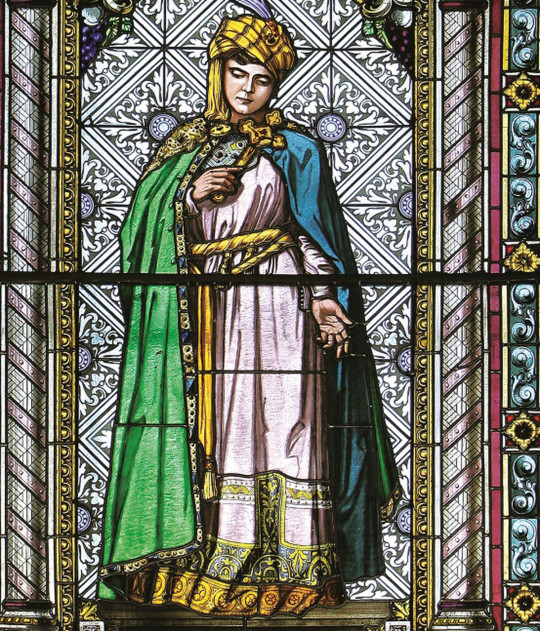
Depiction of Despina Hatun on one of the stained glass windows in placed on the north facade of St. George Cathedral in Novi Sad.
Created in 1902 by Hungarian artist Imre Zseller ( 1878-1959).
The stained glass depicts Despina Hatun holding a cross; showing her devotion to her faith. Something interesting and catching about her attire is that adding to her simple Serbian clothing she also has a golden turban adorned on her head; depicting her liaison to both the Lazarevic and Osman Dynasty.
( Source: Osmanlı Sarayı’nda Bir Sırp Prenses: Mileva Olivera Lazarevic by Mustafa Çağhan Keskin )
#Bayezid#sehzade bayezid#Sultan#Yildirim#Bayezid The Thunderbolt#SultanBayezid#Sultan Bayezid#Olivera Despina Hatun#OliveraDespinaHatun#mariaoliveralazarevic#maria olivares#Despina Hatun#DespinaHatun#Mileva Olivera Lazarević#medieval#middle ages#ottoman empire#Ottoman#Maria Hatun#Mariahatun#Oliverahatun#cathedral aesthetic#Cathedral#stained glass#stained art#turban#lazarevicdynasty#Lazarevic Dynasty#Ottoman Dynasty#vintage
4 notes
·
View notes
Text
DESPINA HATUN IN FICTION II
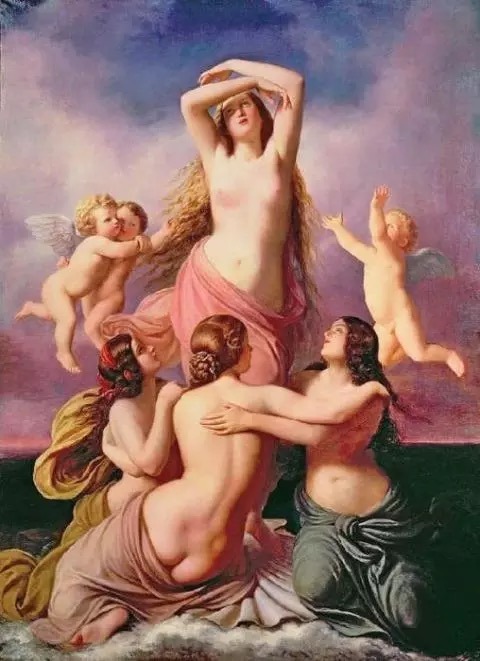
“Olivera; this blonde beauty of the Slavic race had a body as beautiful as Venus and coquetry as a Cleopatra (…) She was a woman with blond hair, blue eyes, a slim waist, and a nice figure. With this beauty of hers, she could have captured anyone she encountered. "Here was a great ruler who dominated the world, this woman's slave, the toy of her desires." Enver Benhan Sapolyo describes Bayezid's love for Olivera with these sentences. ---> Osmanlı Sarayı’nda Bir Sırp Prenses: Mileva Olivera Lazarevic by Mustafa Caghan Keskin.

The novel that was release to the public in 1944 follows the usual hatred and scapegoating by Ottoman/Turkish historians to Despina Hatun. As always it starts with compliments towards her beauty and charms and ends with distain towards her person.
By comparing her to Cleopatra, Şapolyo draws attention to the false idea that like Cleopatra, Olivera used her beauty and flirtations to make a devoted slave out of Bayezid/Yildirim.
Cleopatra wasn't a seductress and neither was Despina Hatun. Both women were highly educated and had leading personalities that played in their favor during their times.
Cleopatra wasn't as beautiful as many believe, she was a scholar, a woman with a wise tongue, that's how she attracted. And though by the statements of many Turkish sources who often describe the beauty of Despina Hatun as ethereal. I do not believe that in a harem full of beautiful concubines, beauty is what kept Despina Hatun in high status in the eyes of Sultan Bayezid, even if she was the most beautiful and alluring during Bayezid's reign.
It ( her beauty ) might have attracted him to her, but beauty does only that. It attracts, it does not keep and maintain one's devotion to another, especially for 12 years.
------------------------------------------------------------------------------
Arriving at the end of the novel he ( Şapolyo ) finish his novel by making Despina Hatun turn into a seductress no longer interested in Bayezid. no no no, his version of Despina Hatun has her eyes set on a bigger target; Timur. Yes, the same man who could have possibly made her serve him half naked at a banquet during her captivity.
The heartbroken Bayezid spits in the direction of Despina's face (as one does) then calls her a b!tch (because why not just add that in) and then take his own life by drinking poison.
This novel like many Turkish beliefs about Despina Hatun scapegoat her for Bayezid's own demise. It ignores the trauma she suffered by not only her own humiliation but also her husband.
Overall the whole novel is yet again a scapegoat projects of Turkish writers. I woudn't read it, neither will I even think of spending money on it.
I'll give it a 1.5/10. 1 for decent scapegoating. 0.5 for imagination and creativity, it would have been a whole 1, but the plot has been done before.
#geology#mariaoliveralazarevic#Oliverahatun#DespinaHatun#Princessmariaoliveralazarevic#Mariahatun#Hatun#Sultana#LazarevicDynasty#medievalserbia#royalife#Moravianserbia#oliverdespina#Milevaolivera#princess#Despina Hatun#Olivera Despina#Olivera Hatun#BayezidI#Bayezid I#sultan bayezid#Bayezid The Thunderbolt#Bayezidthethunderbolt#Yildirim Bayezid#YildirimBayezid#Yıldırım Beyazıt#YıldırımBeyazıt#Enver Behnan Şapolyo#EnverBehnanŞapolyo#novel
2 notes
·
View notes
Text
A Memory Of Bayezid From Olivera

( Though the screenshot is black and white, the original tone of the textile is more golden with preserved green, red, and light blue patterns, combined with Arabic texts in black, despite the age.)
The only close physical memory of Olivera and Bayezid. This textile with Ottoman designs and silk texture is one memory we have of both Olivera and Bayezid.
The relic that was donated in the 1400s is about 2.18 meters ( 7'1 feet or 86 inches ) in length and 1.42 meters ( 4'6 feet or 56 inches ) in width.
The text spells " Sultan Bayezid " in Arabic, aiming to the idea that it was made for him and eventually got into the hands of Olivera and made its way to the Studenica Monastery; one of the eldest monasteries built by one of Olivera's ancestors.
Though there are many legends as to how the silk textile ended up in the Monastery, my personal opinion is that Olivera donated the textile after realizing she was gonna die soon and wanted people to remember not herself but her perished lover. ( I'm delusional )
( Sources: Osmanlı Sarayı’nda Bir Sırp Prenses: Mileva Olivera Lazarevic by Mustafa Çağhan Keskin. )
#textile#fabric#relic#geology#arabic#Bayezid#sehzade bayezid#Sultan#Yildirim#Bayezid The Thunderbolt#SultanBayezid#Sultan Bayezid#Monastery#Olivera Despina Hatun#OliveraDespinaHatun#mariaoliveralazarevic#maria olivares#silk#fabric design#fabric crafts#Despina Hatun#DespinaHatun#Mileva Olivera Lazarević#medieval#middle ages#ottoman empire#Ottoman#Maria Hatun#Mariahatun#Oliverahatun
4 notes
·
View notes
Text
The Early Life Of Despina Hatun
Maria Olivera was born around 1372-1373 possibly late 1372 or early 1373 in the rich capital of Krusevac as the youngest daughter of Great Prince Lazar and Grand Princess Milica.
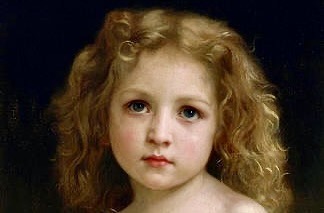
Alike of many other European societies during the Middle Ages, education in Moravian Serbia, for those who could afford it started at a pretty young age, 5-7 years of age.
Her father; Lazar made sure to open various public schools near monasteries for the less fortunate and opened a private one in the court of Krusevac for his own children and other children of the court; in other words other children of nobility, possibly also containing her ladies in waiting and companions.
The schools were led by priests and monks who offered knowledge in Christian theology and philosophy, writing, and reading in their mother's tongue.
Her early life was mostly filled with education, education and more education. (The children of Prince Lazar were considered the most educated in their time.)
Apart from school, from private foreign tutors and under the strict supervision of her mother; Grand Princess Milica, and aunt; nun Jefimija she learned Latin, Greek, mathematics, singing, literature, and the secrets of diplomacy and etiquette for a Princess.
She also learned how to run a household from her mother, either by observing or by her mother educating her on the topic of becoming the mistress of the house.
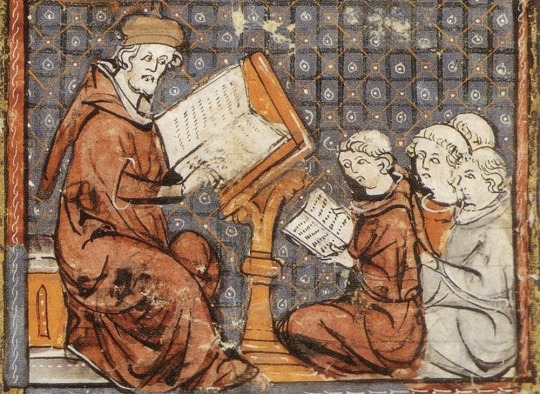
When away from her studies, Olivera was likely preoccupied with the various musicians, jesters, actors, weavers, tailors, magicians, and preachers coming for a quick stay at her father's court, who offered her temporary entertainment like songs, plays, clothing, and jewerly.
Like the rest of her family, Olivera was passionate about literature and art.
The palace of Krusevac contained a large library where the royal children were educated. The library contained various native and foreign translated scriptures, the foreign scriptures in question were Greek, Arab and Indian. containing history as well as fiction; which Olivera seemed to be a fan of, as she would later become a patron of art and literature.
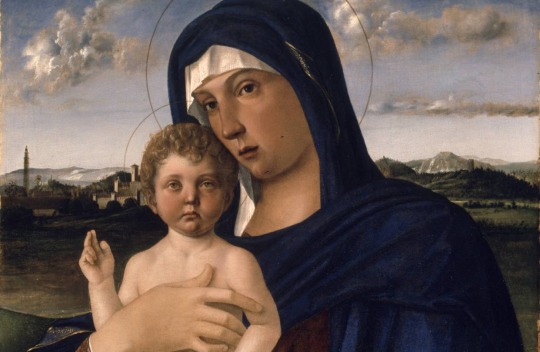
In 1381, the family suffered the loss of the youngest prince; who unfortunately died in infancy.
Years later between 1387 and 1388, Olivera's elder unmarried sister; Teodora was married off and left the capital leaving Olivera as the only unmarried Princess.
Some sources claim that growing up Olivera was the favorite of everyone, the people, her parents, her sisters, and her younger brothers, but perhaps this legend was due to her sacrificial marriage.

Though all Lazarevic members participated in the knight tournaments, especially the princes. Olivera as the rest of the female family members most likely stayed on the sidelines to watch.
Her life was mostly filled with duties and education, but she did have time for other activities and hobbies like art, literature, and knight tournaments. She seemed to have a rich and peaceful life up until The beginning of 1389.
( Sources: „Књижевни лик кнеза Лазара у старој српској књижевности." Od roda Nemanjića by Dr Miladin Stefanović. Book: Daily life in medieval Serbia by Marko Popović, Smilja Marjanović-Dušanić, Danica Popović.)
#geology#mariaoliveralazarevic#Oliverahatun#DespinaHatun#Princessmariaoliveralazarevic#Mariahatun#Hatun#Sultana#StefanLazarevic#despotstefan#Lazar#Knezlazar#tsarlazar#JelenaLazarevic#LazarevicDynasty#medievalserbia#PrincessMilica#MilicaNemanjic#MilicaHrebeljanovic#royalife#Moravianserbia#knights#knighttournaments#oliverdespina#Milevaolivera#childhood#princess#Despina Hatun#Olivera Despina#Olivera Hatun
4 notes
·
View notes